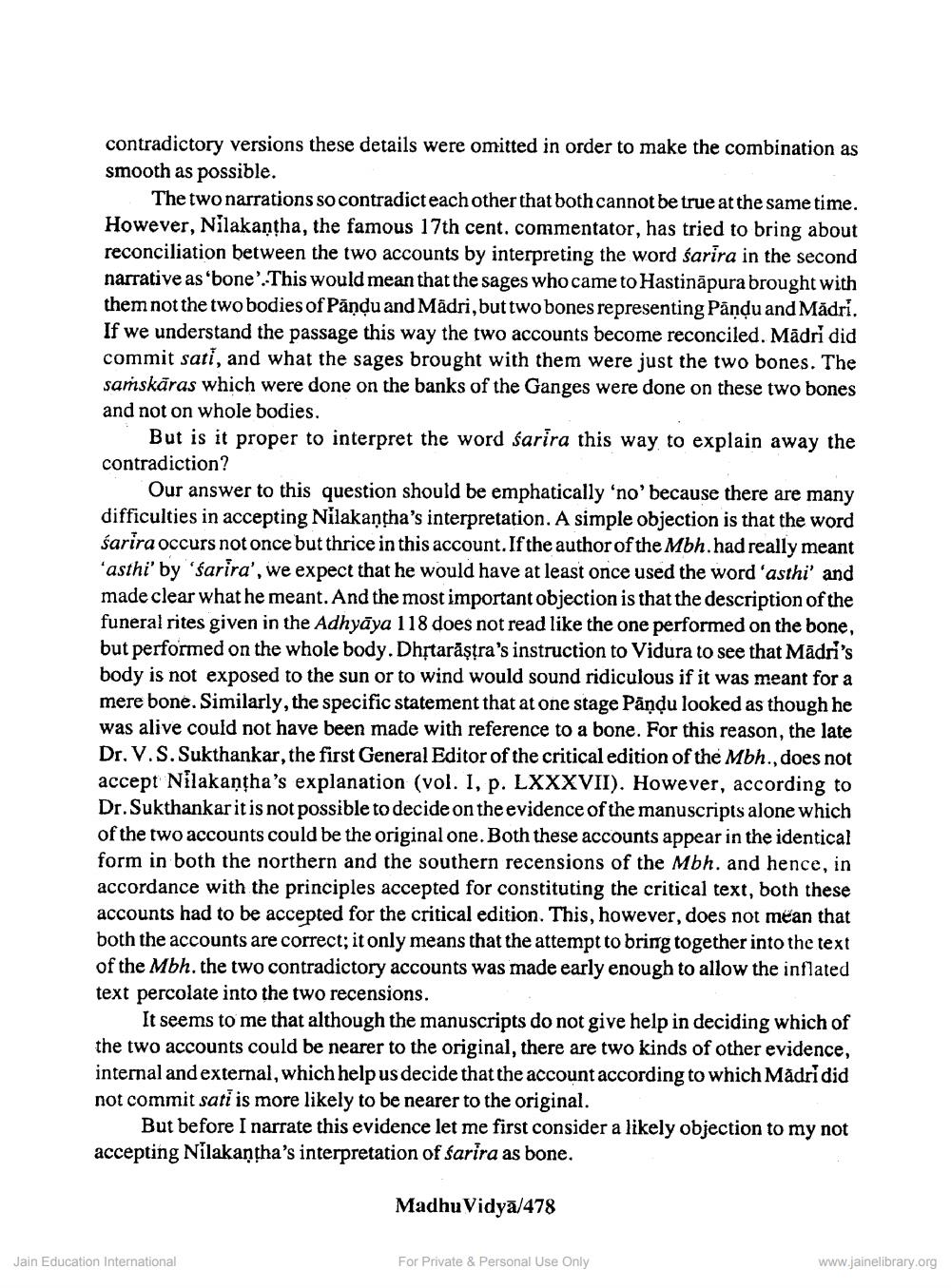________________
contradictory versions these details were omitted in order to make the combination as smooth as possible.
The two narrations so contradict each other that both cannot be true at the same time. However, Nilakantha, the famous 17th cent. commentator, has tried to bring about reconciliation between the two accounts by interpreting the word śarira in the second narrative as bone'.This would mean that the sages who came to Hastināpura brought with them not the two bodies of Pāņdu and Mädri, but two bones representing Pandu and Mädri. If we understand the passage this way the two accounts become reconciled. Madri did commit sati, and what the sages brought with them were just the two bones. The saṁskāras which were done on the banks of the Ganges were done on these two bones and not on whole bodies.
But is it proper to interpret the word sarira this way to explain away the contradiction?
Our answer to this question should be emphatically 'no' because there are many difficulties in accepting Nilakantha's interpretation. A simple objection is that the word śarira occurs not once but thrice in this account. If the author of the Mbh.had really meant 'asthi' by 'śarira', we expect that he would have at least once used the word 'asthi' and made clear what he meant. And the most important objection is that the description of the funeral rites given in the Adhyāya 118 does not read like the one performed on the bone, but performed on the whole body. Dhstarāşıra's instruction to Vidura to see that Mādri's body is not exposed to the sun or to wind would sound ridiculous if it was meant for a mere bone. Similarly, the specific statement that at one stage Pandu looked as though he was alive could not have been made with reference to a bone. For this reason, the late Dr. V.S.Sukthankar, the first General Editor of the critical edition of the Mbh., does not accept Nilakantha's explanation (vol. I, p. LXXXVII). However, according to Dr. Sukthankar it is not possible to decide on the evidence of the manuscripts alone which of the two accounts could be the original one. Both these accounts appear in the identical form in both the northern and the southern recensions of the Mbh. and hence, in accordance with the principles accepted for constituting the critical text, both these accounts had to be accepted for the critical edition. This, however, does not mean that both the accounts are correct; it only means that the attempt to bring together into the text of the Mbh. the two contradictory accounts was made early enough to allow the inflated text percolate into the two recensions.
It seems to me that although the manuscripts do not give help in deciding which of the two accounts could be nearer to the original, there are two kinds of other evidence, internal and external, which help us decide that the account according to which Mădri did not commit sati is more likely to be nearer to the original.
But before I narrate this evidence let me first consider a likely objection to my not accepting Nilakantha's interpretation of sarira as bone.
Madhu Vidya/478
Jain Education International
For Private & Personal Use Only
www.jainelibrary.org




